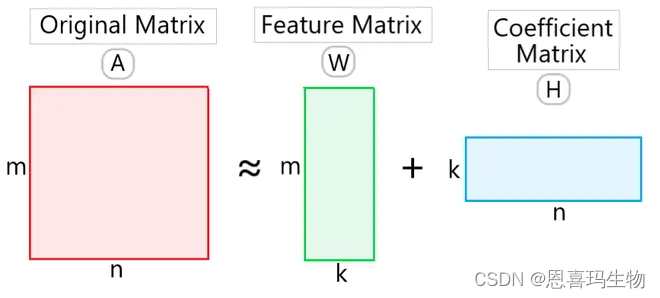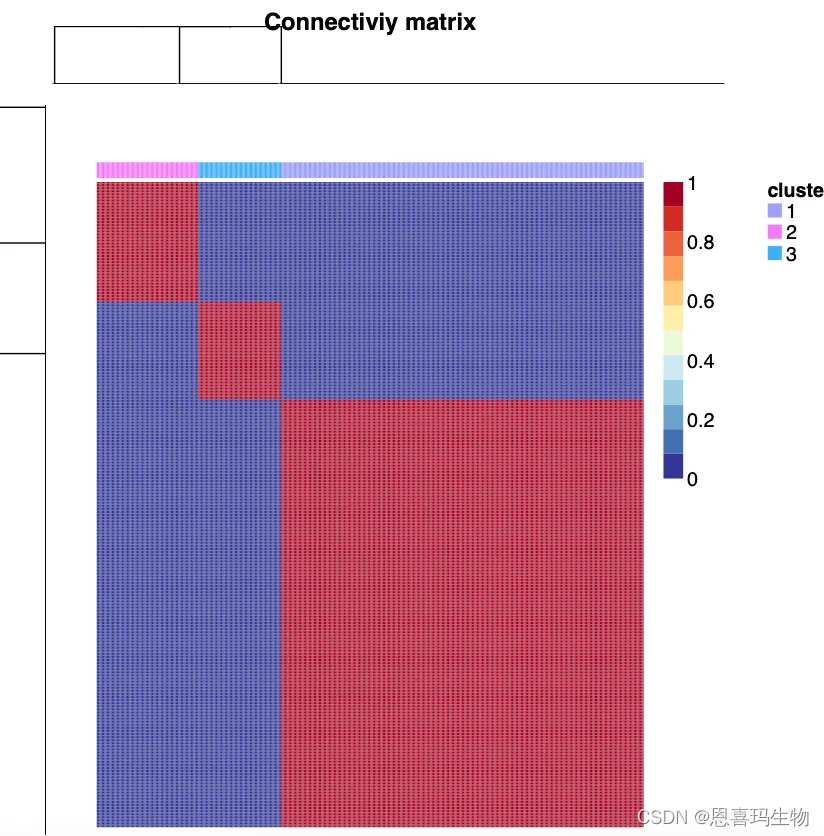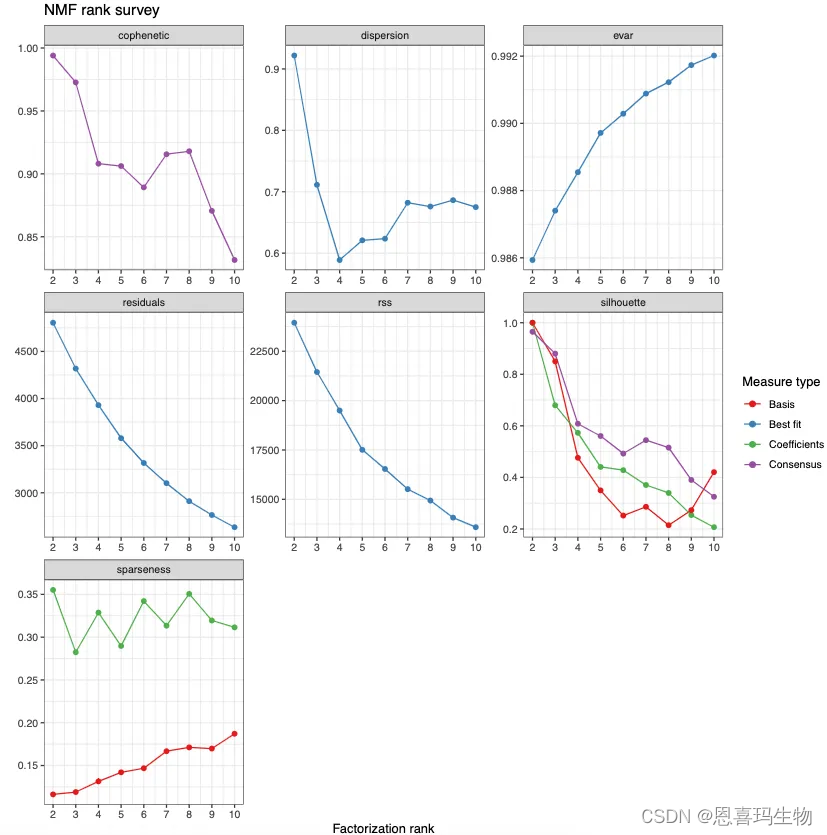Non-Negative Matrix Factorization (NMF).
Find two non-negative matrices, i.e. matrices with all non-negative elements, (W, H) whose product approximates the non-negative matrix X. This factorization can be used for example for dimensionality reduction, source separation or topic extraction.

安装NMF
ubuntu
ubuntu上,编译需要
sudo apt install libopenmpi-dev
R
using(pak)
pak::pkg_install("NMF",dependencies=T)
使用
run_nmf(
exp=exp,
genelist=c("PCNA","HNRNPK","TRIM28","NPM1","PARK7","HDAC1")
)
输入内容
exp:表达矩阵,标准化过,但是不能有负数,行是基因,列是样本
# TCGA-3L-AA1B-01A TCGA-4N-A93T-01A TCGA-4T-AA8H-01A
# MT-CO2 14.77639 15.77524 16.05650
# MT-CO3 15.13540 16.16666 15.84924
# MT-ND4 14.66976 14.80350 15.21889
# MT-CO1 13.98580 14.53619 15.30272
# MT-ATP6 13.53251 14.28397 14.60036
genelist :基因名向量,基因名需要在exp的行名中,如果为空则使用全部基因
method: 最常用的三种brunet、lee、snmf/r
n_run:运行次数
结果
结果怎么看https://mubu.com/doc/C4gVcgp-G0


R function
run_nmf <- function(
exp,
genelist=NULL,
od = '.',
n_cluster = 3,
n_run=30,
method="brunet",
cluster_range=2:10,
seed = 1314,
cluster_character = "Cluster",
)
{
if (!dir.exists(od)) {
dir.create(od)
}
if(!is.null(genelist)){
exp <- exp[which(rownames(exp) %in% genelist), ]
}
using(NMF,data.table,tidyverse)
if(is.numeric(cluster_range)){
result <- NMF::nmf(exp,
cluster_range,
method = method,
nrun = n_run,
seed = seed
)
plot(result)
ps(paste0(od, "/ranks.pdf"),w=10,h=10)
}
result2 <- NMF::nmf(exp, method = method, rank = n_cluster, seed = seed,nrun = n_run)
key_gene <- NMF::extractFeatures(result2, 0.5) # 提取关键基因
fwrite(data.table(key_gene=key_gene),paste0(od,'/key_gene.csv'))
# 提出亚型
Cluster <- as_tibble(predict(result2), rownames = "Sample") %>%
dplyr::rename(Cluster = value) %>%
dplyr::mutate(Cluster = paste0("Cluster", Cluster))
fwrite(Cluster, paste0(od, "/NMF_Cluster.csv"))
consensusmap(result2,
labRow = NA,
labCol = NA,
annCol = data.frame("cluster" = predict(result2)[colnames(exp)])
)
ps(paste0(od, "/Cluster.pdf"),w=6,h=6)
return()
}
ps <- function(filename, plot = FALSE, w = 12, h = 6) {
if (is.object(plot)) {
print(plot)
}
plot <- recordPlot()
pdf(file = filename, onefile = T, width = w, height = h)
replayPlot(plot)
dev.off()
}
Reference
https://cloud.tencent.com/developer/article/1806266
https://mubu.com/doc/C4gVcgp-G0
https://scikit-learn.org/stable/modules/generated/sklearn.decomposition.NMF.html
https://www.geeksforgeeks.org/non-negative-matrix-factorization/





















 766
766

 被折叠的 条评论
为什么被折叠?
被折叠的 条评论
为什么被折叠?








